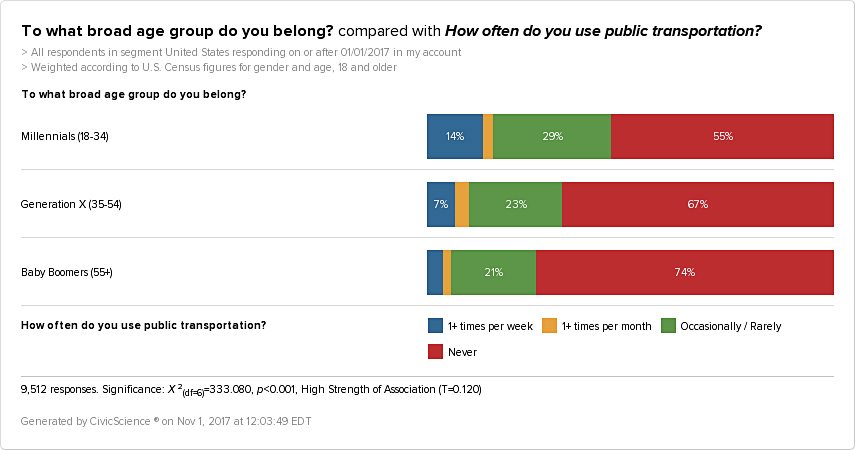The Gist: Our recent data show that more than 1 in 10 Millennials use public transportation at least once a week. When you combine that with the various benefits of public transit advertising, in general, and the high rate of Millennials who use ad blockers, it seems that public transit advertising would be beneficial for marketers to note.
Here’s the deal: As much time as Millennials spend on social media, they do other things, too. Instagram doesn’t get you from Point A to Point B, and it doesn’t feed you. Social media has a strong influence on this young demographic, naturally, but in focusing only on social media, advertisers may forget about other opportunities.
As an example, I recently came across some data that are not all too surprising, but gravely overlooked.
Check this out:
14% of Millennials use public transportation at least once a week. When we break that down further, we find that 12% of those respondents use public transportation at least 3 times a week. Another 2% of Millennials use public transportation at least once a month.
In total, 45% of Millennials use public transportation at least occasionally, while the same is true for only 33% of Gen Xers, for comparison.
Considering the high instance of Millennials using public transportation, and the fact that most – if not all – brands are constantly trying to connect with them, you might think that advertising on public transportation would be more of a hot topic.
However, this form of advertising is often overlooked. In fact, when searching for case studies or information on the subject, one of the first articles to surface is from 2005 – almost 13 years ago.
In that antiquated article, however, the author provides very concrete benefits of advertising on public transportation, many of which still hold true today. Some of her reasons include:
You can’t zap it.
You can’t ignore it.
It can’t be turned off like television.
It reaches drivers and passengers no matter what radio stations they’re listening to.
The large, colorful, innovative designs demand attention.
You have exclusivity in your space.
It delivers a varied audience.
It offers flexibility of ad size and location.
When you couple these insights with the previous data about Millennials, and the fact that 67% of Millennials use an ad blocker, public transit advertising seems like a surefire way to stand out and engage Millennial consumers.
So, it might not be a bad idea to spend more advertising dollars in the real live world.










